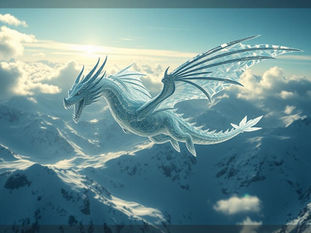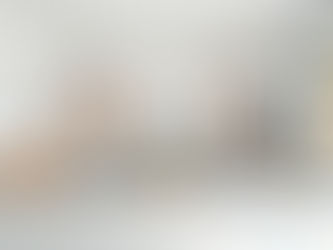
Understanding Midjourney's New Omni Reference Feature
May 3
4 min read
0
64
0

Midjourney recently released a powerful new feature called Omni Reference. This goes beyond the previous character reference tool. It allows you to influence your new images using any picture as a reference. Let's look at what this new tool does and how you can start using it.
What is Omni Reference?
Omni Reference is a system that lets you show Midjourney a picture and tell it, "Include aspects of this in my new image." Unlike Character Reference, which focused on people, Omni Reference can use any image – a person, an object, a style guide, or anything else.
Adding a Reference Image
Using Omni Reference is simple. You need to add your reference image to Midjourney first.
Find the icon next to the prompt box where you usually add images.
Click that icon.
You can drag a file from your computer and drop it there.
Alternatively, click again and find the file on your computer.
Once uploaded, your image will appear in a gallery. Click, hold, and drag the image from the gallery into your prompt box. It should appear labeled for Omni Reference.
After dropping the image, you can start typing your prompt.
Mastering the Omni Reference Weight
One important setting with Omni Reference is the weight. This controls how much Midjourney focuses on your reference image compared to your text prompt.
You can find a slider button after adding your reference image. Click it to adjust the Omni strength. The range is from 1 to 1000. The default is 100.
Testing suggests that increasing the weight too much can sometimes lead to unexpected results. The best results are often found with weights between 50 and 130. Going lower than 100 often works well. Going much higher than 130 might make the image focus so much on the reference that it ignores your prompt or creates weird effects.
If you prefer, you can also type the parameter --ow followed by the number (e.g., --ow 50) directly into your prompt.
Early Results and Observations
This feature is new, and people are still figuring out the best ways to use it. Early tests show varied results. Your images will not always look exactly like the reference right away. The success rate for getting a close match is currently around 25% to 45%. You will see images that look close, but aren't quite right.
Unexpected Details
One surprising observation during testing was how Midjourney sometimes includes things from the reference image that were removed, like a plant in the background of a picture with a transparent background. It shows that Midjourney might be picking up data beyond just the visible pixels in the reference image.
Prompting Matters
The way you write your prompt significantly impacts the outcome. Simple prompts might not always work as expected. Including details like the subject or setting early in the prompt seems to help. Mentioning the background is helpful, as the bot won't just create a random scene for you.
Success with Specific Examples
Some types of prompts seem to work better than others when using Omni Reference. For instance, referencing a person and asking Midjourney to put them in specific clothing often yields very good results. Seeing yourself wearing a certain outfit in a unique setting can be inspiring. This might even help with personal projects or visualization.
To get the most out of Midjourney and features like Omni Reference, consider using the TitanXT Midjourney Automation Suite. It can help you manage your prompts, variations, and generations more effectively, saving you time and effort.
Using Variations
If your initial grid of Omni Referenced images isn't quite right, try using the variation buttons (Subtle or Strong). Generating variations from a promising image in the grid often produces much closer results to your reference.
Mixing References (Attempt)
Currently, you can't use more than one Omni Reference image directly in the prompt. One approach tested involved putting two reference photos into a single image file (like a transparent PNG). However, this led to errors and did not function as expected. The tool might not handle transparent backgrounds well or could be experiencing load issues due to its popularity.
Putting Omni Reference to Work
While still early days, Omni Reference has many potential uses:
Placing a person into different styles or scenes.
Using objects or patterns as inspiration for new creations.
Exploring how different art styles affect a specific reference.
Experiment with different weights and prompting styles to see what works best for your ideas. Don't be discouraged by initial inconsistent results; this feature is still developing.
Trying out new Midjourney features like Omni Reference takes time and many generations. The TitanXT Midjourney Automation Suite is designed to streamline this process, allowing you to run experiments faster and manage your creations efficiently. Check it out to enhance your workflow.
Conclusion
Midjourney's Omni Reference is a promising new tool that adds significant flexibility to image generation. It allows you to draw inspiration from any image you provide. While there's a learning curve to prompting effectively with it, especially regarding the Omni Reference weight, the possibilities are vast. Keep experimenting, try different reference images and prompts, and explore weights around the 50-130 range for better consistency.
Ready to take your Midjourney creations to the next level and make the most of powerful features like Omni Reference? Explore how the TitanXT Midjourney Automation Suite can automate repetitive tasks and manage your projects. Visit the site today to learn more.






